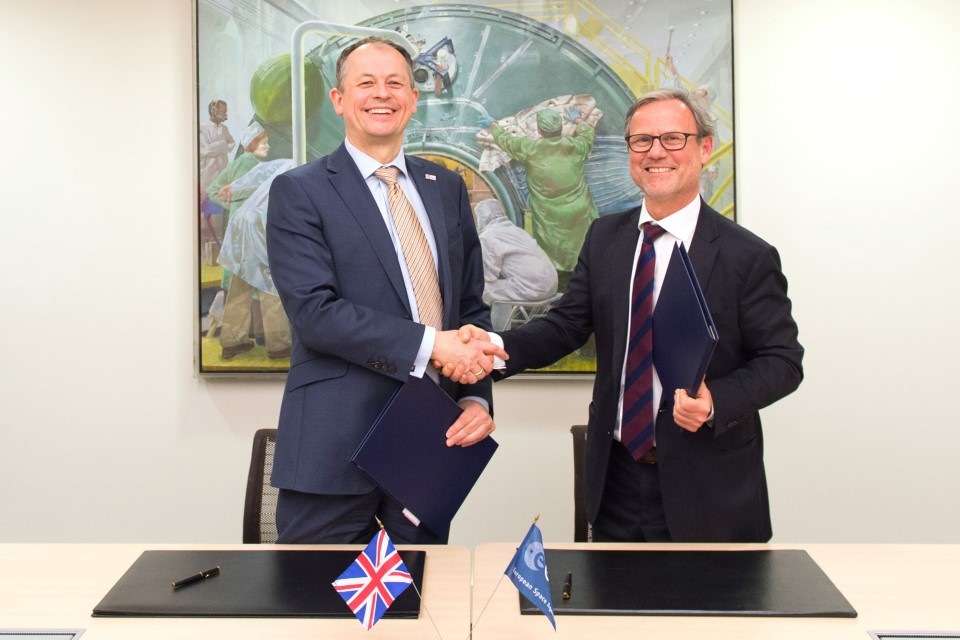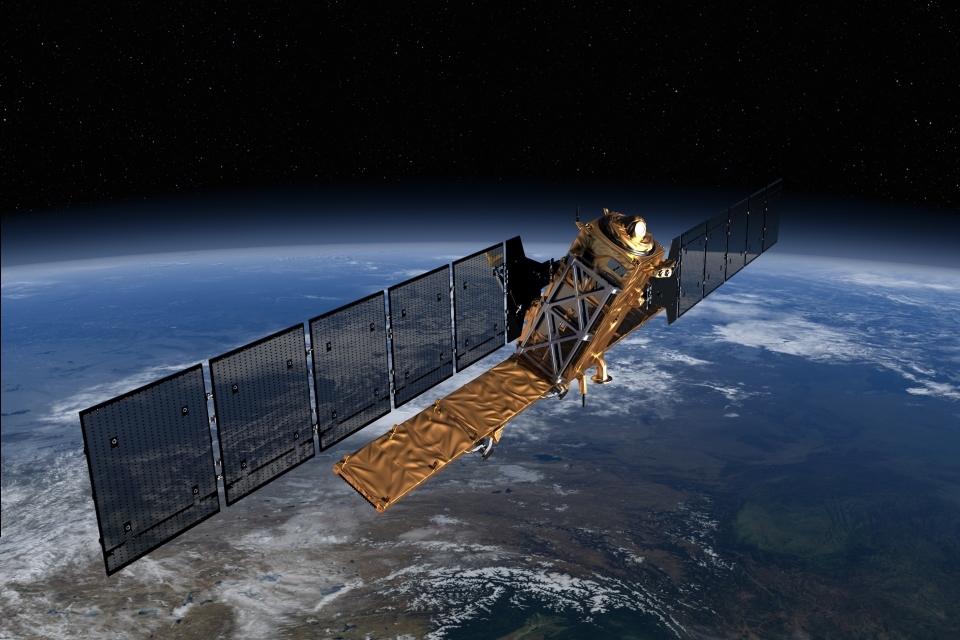Europe's Earth observation programme maximised by UK data hub
The UK is to host a world-class data facility, giving scientists full access to Earth observation data from Europe’s Copernicus programme.

Copernicus logo

Signature of ESA/UK Collaborative Ground Segment Cooperation agreement. Credit: ESA–N. Imbert-Vier, 2015.
Europe’s most ambitious Earth observation (EO) programme to date, Copernicus is launching a family of satellites, called Sentinels, that will provide accurate, timely and easily accessible information to improve the management of our environment, understand and mitigate the effects of climate change and ensure civil security.
The new space data hub will be jointly funded by the UK Space Agency and the Satellite Applications Catapult and will ensure the UK is ready to fully exploit the Sentinels’ operational data as soon as it becomes available.
The agreement to host the data hub was signed by Dr David Parker, Chief Executive of the UK Space Agency, at the European Space Agency last week (18 March 2015) and announced today (23 March) to the UK’s EO community at the UK Earth Observation Applications Conference in London.
Dr David Parker, Chief Executive of the UK Space Agency, said:
Europe’s Sentinel satellites are set to live up to their name by watching over our planet and providing us with the vital data we need to solve the climate and environmental problems facing mankind.
By hosting a Sentinel data hub and making the satellites’ unique data readily available in the UK, we can continue our leading work in the field of Earth observation whilst opening up new business opportunities from the commercial development of space data.
Defra Chief Scientist Ian Boyd added:
The information that we get from the Copernicus Satellites has been invaluable in allowing the government to make environmental policy based on robust scientific evidence. This earth observation data has the potential to allow a wide range of organisations to help our environment. This historic agreement will ensure everyone can access this information for free.

Sentinel-1. Credit: ESA/ATG medialab.
The Copernicus programme will result in a huge increase in the amount of satellite data becoming available. When fully operational 8 terabytes of new data per day will be available for people to access, equivalent to 8 computer hard drives worth, and all of it free to all for download. The new data hub will ensure this wealth of Sentinel product data is easily accessible and available for UK users to access and download; maximising the growth opportunity for the downstream applications market. Users can expect access to Sentinel products within a matter of hours from initial acquisition as well as a full set of archive data and product enhancing applications. The service will be further enhanced for those who require near real time data by the addition of a European Data Relay Service (EDRS) terminal.
The data hub will take advantage of previous funding and build on it. It will link 2 large assets; the Catapult CEMS facility, which offers storage and processing capability to the industrial community and the Academic JASMIN facility which offers the same service to the academic community. The Catapult facility will also be linked in to the Airbus data centre at Farnborough via a high-speed data link. The Airbus facility will offer additional hosted processing facilities to commercial users, negating the need for users to download large amounts of data for further processing. UK government requirements will also be served. The two assets are located at Harwell, which has a dedicated space cluster hosting numerous industrial and SME data application developers. It is envisaged that by centring the community around such facilities this will maximise knowledge sharing and help position Harwell as the international centre of excellence driving the global expansion of space derived climate and environmental services.